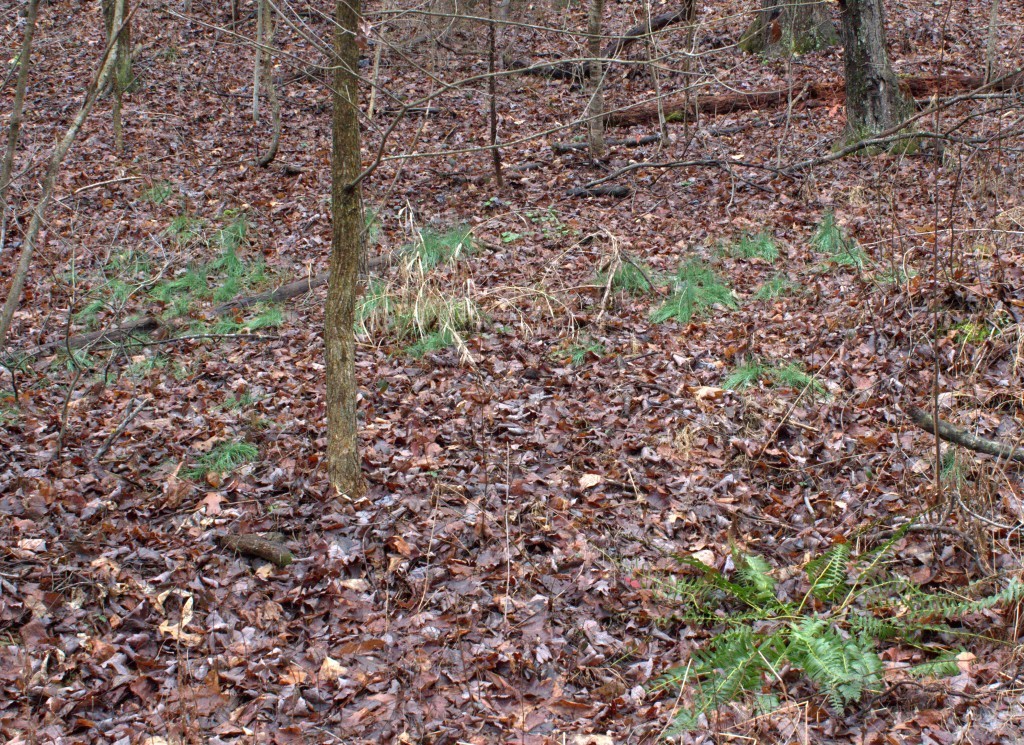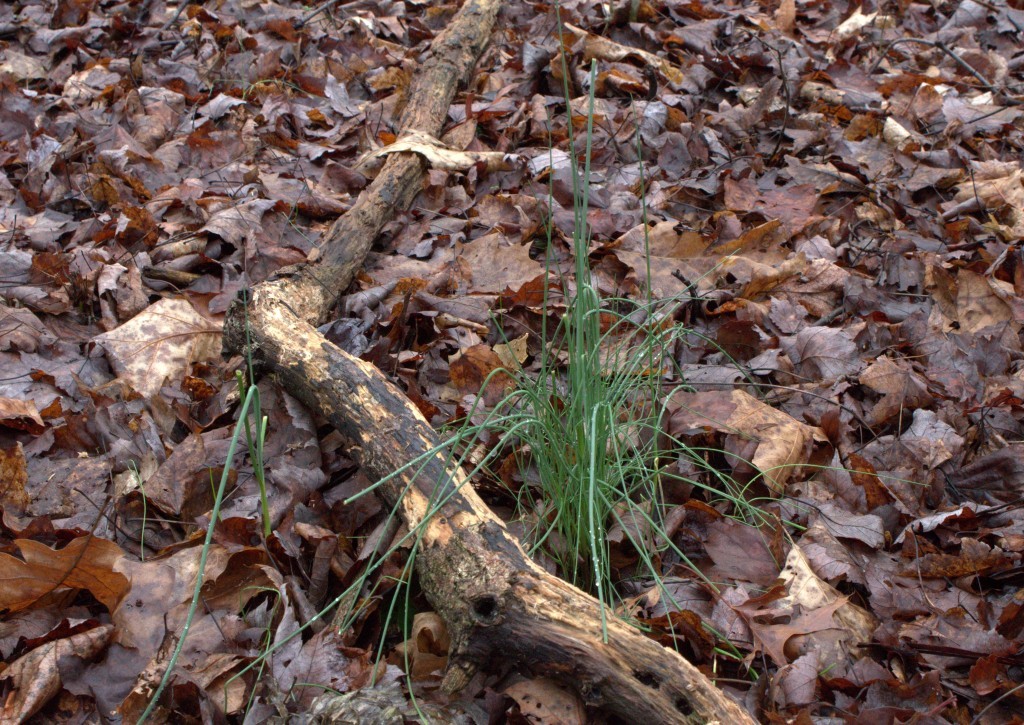Every year when most of the scenery is trimmed down to bare trees and the colors are browns and greys, the chives come out of hiding. Green is really noticeable in the woods when you see it in January or February.

Wild chives grow in the forested mountains of Central Pennsylvania. The first time I realized these plants were the same chives that we eat, it stumped me. I guess I had never given any thought about, “Where do chives come from?”
Well, they looked like chives, but fakes and look-a-likes abound in nature, so we need to take precautions and err on the side of safety. I know of a guy who died after eating a wild mushroom, so I take heed to all warnings!
Crushing one of the long, rolled leaves gave out a scent of chives. That’s how you know they’re ok to eat.
We’ve grown chives in the herb garden so it was easy to recognize the ‘clump of grass in the middle of the woods’ as wild chives.
The way to know you’re safe with your wild-picked chives is to note the smell. If your “chives” don’t have an onion or chive-like scent, then it’s not the right plant. Besides, in Eastern North America there isn’t another plant that looks quite like chives.
Chives, Allium schoenoprasum, grows in clumps that are taller than grass in your yard. These clumps rise above the leaf litter on the forest floor.

The dark green leaves are hollow cylinders that taper to a point at the tip. The longest leaves, maybe up to a foot long, bend to the sides. When crushed, they release a mild onion-like scent.
If you were to dig up the plant, you’d find small 1/2-inch white bulbs from which the leaves sprout.
Garlic, onion and chives are all members of the Lily Family, Liliaceae, and one thing they have in common are the odoriferous compounds that make them tasty. Other family members are quite poisonous, such as irises and gladiolas, but they have no onion-like smell. Also, all these related plants are much larger than chives and the leaves tend to be flat, not rolled like the chives leaves.
Flowering occurs in mid- to late-Spring as a cluster of pink/lavender flowerettes on a round flower head. We’ll be looking for chives to flower in May or June at our location.